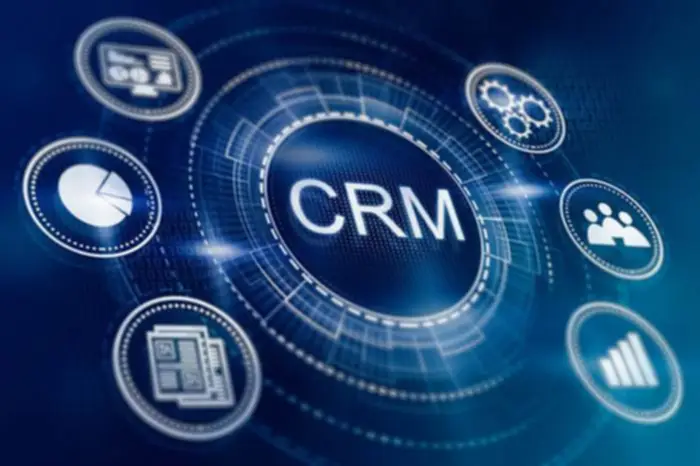Climb The 5 Steps Of A Continuous Supply Maturity Model
Once the event staff has selected a CI/CD device, it must ensure that all setting variables are configured outside the application. CI/CD instruments enable growth teams to set these variables, masks variables corresponding to passwords and account keys, and configure them on the time of deployment for the target environment. Teams using steady deployment to deliver to manufacturing may use different cutover practices to reduce downtime and manage programming language deployment risks. One option is configuring canary deployments with an orchestrated shift of traffic utilization from the older software program model to the newer one.

The benefits of agile embody being able to support teams in altering circumstances while focusing on delivering enterprise value. Agile growth practices dramatically shortened time to market and improved the quality of software merchandise, because of automated testing and fast feedback. Continuous delivery combined with continuous integration (together often known as CI/CD) are an necessary facet of modern software program development, as a end result of https://www.globalcloudteam.com/ it permits rapid launch cycles and fast suggestions for builders. This is a crucial requirement for DevOps work processes and agile software program development.

One of the main focuses in continuous supply is to construct, test and launch software program rapidly, which DevOps teams also try for. Codefresh is a whole software program provide chain to build, take a look at, ship, and handle software with integrations so teams can choose best-of-breed tools to help that provide chain. Many Scrum Groups have Developers focusing on helping with testing actions such as exploratory testing or helping to maintain and the suites of automated checks. To assist with this Builders create tests and a deployment pipeline to run those tests. It enables visibility and Builders get quick suggestions on the impact of the adjustments they have introduced.
What’s Steady Delivery In Testing?
- It’s a proactive way to reduce risks like security vulnerabilities and compatibility issues.
- Automated testing frameworks assist high quality assurance engineers outline, execute, and automate various types of exams that may assist improvement teams know whether or not a software program build passes or fails.
- Options which would possibly be nonetheless beneath growth are wrapped with characteristic flags in the code, deployed with the main department to production, and turned off until they are prepared for use.
- Subsequently, start by defining a basic CD course of and creating some simple scripts, however concurrently research, learn and check more complicated processes and superior instruments.
At this degree you’ll more than likely start to have a look at steadily automating components of the acceptance testing. Whereas integration tests are component particular, acceptance exams sometimes span over a number of parts and across a number of methods. At newbie degree, the monolithic structure of the system is addressed by splitting the system into modules. Modules give a better construction for development, build and deployment however are usually not individually releasable like components. Doing this may also naturally drive an API managed method to describe inside dependencies and also affect making use of a structured method to handle third party libraries.
By distinction, the pull-based method updates the application by frequently evaluating the precise state of reside infrastructure to the specified state specified in the surroundings repository. In Kubernetes, that is achieved by a GitOps controller that detects a discrepancy between the precise and desired states. Upon any discrepancy, it updates the infrastructure to match the surroundings repository.
Continuous Integration/continuous Supply Pipeline
While the foundational ideas are important, translating them into day-to-day operations requires thoughtful execution and ongoing refinement. Lastly, Automated Rollbacks ensure that if a deployment negatively impacts system health or business KPIs, restoration is swift and minimally disruptive. Implementing Progressive Delivery requires a powerful understanding of its key parts, every of which plays a crucial role in attaining safer and smarter releases. While the best pre-production surroundings is similar to the manufacturing environment, this isn’t at all times possible.
The deployment phase occurs after the construct passes all testing and becomes a candidate for deployment in manufacturing. A continuous supply pipeline sends the candidate to human teams for approval and deployment. A steady deployment pipeline deploys the build automatically after it passes testing.
Although testing is automated, many organizations are reluctant to cede management over the discharge to manufacturing, and, thus, would possibly require a handbook approval step earlier than code gets promoted to the next stage of deployment. Steady delivery is a set of ideas and practices that allow organizations to create and deploy small software program releases rapidly, without rising deployment risk or sacrificing quality of code. The concept of steady supply was first described within the 2010 e-book co-authored by Thoughtworks alumni Jez Humble and David Farley of the same name. Continuous integration is a improvement philosophy backed by course of mechanics and automation. When practicing steady integration, builders commit their code into the model management repository regularly; most groups have a standard of committing code no less than every day. The rationale is that it’s easier to determine defects and other software quality issues on smaller code differentials than on larger ones developed over an intensive interval.
Octopus Deploy
Nevertheless, an upfront full redesign of the entire system is not a beautiful option for many organizations, which is why we’ve included this category within the maturity mannequin. At professional degree some organizations choose to make a bigger effort and type full cross practical groups that may be fully autonomous. With extremely short cycle time and a mature delivery pipeline, such organizations have the confidence to undertake a strict roll-forward only technique to production failures. In Kubernetes, pull based deployment is done via a GitOps controller that detects discrepancies between the actual state and the specified state. If there are variations, it instantly updates the infrastructure to match the environment repository. It can also examine an image registry to see if there’s a new model of an image obtainable to deploy.
She has over 14 years of expertise in software program delivery, having worked on a extensive range of applied sciences and the combination of many disparate methods. At ThoughtWorks, she has coached teams on Agile and Continuous Delivery technical practices. She contributes to and drives the regional technology strategy, and is a conduit between the technical teams on the ground and international technical management. Rachel can additionally be a member of the Technical Advisory Board to the CTO, which regularly produces theThoughtWorks Know-how Radar.
They decouple function continuous integration maturity model deployment from code deployment, offering unparalleled flexibility in controlling the consumer expertise. Furthermore, Progressive Delivery empowers cross-functional teams—development, product, operations, QA, and business stakeholders—to collaborate more effectively. By providing visibility into launch stages and offering management points for intervention, it creates a shared sense of possession and accountability. Continuous Delivery (CD) is a development methodology that takes code modifications, exams them in a realistic environment, and routinely releases them to production. Even essentially the most thorough testing cannot assure that an software will behave appropriately in the production environment.
The final decision to deploy to a stay production environment is triggered by the developer. Knowing that your code meets your SLO requirements and stands as a lot as high quality evaluations permits you to deploy confidently. The deployment methods may range in complexity from simple to complex primarily based on the use case software and danger tolerance. Widespread methods in this area embody blue-green deployments, canary releases, and rolling updates. One can make use of the “Infrastructure as Code” tools for infrastructure provisioning and configuration in constant deployments. In this information, let’s focus on extra on why is Steady Supply needed particularly in today’s Agile improvement practices, discussing tips on how to implement CD and the most effective tools for implementing continuous supply processes.
However, CI/CD is solely one process that may drive these enhancements, and there are different prerequisites to enhancing deployment frequencies. For instance, Jenkins lists more than 1,800 plugins that assist integration with third-party platforms, user interface, administration, source code management, and construct administration. CI is a method to merge all builders’ copies of code into a code base regularly. Isolated changes are examined and built-in rapidly with unit and integration tests. Steady integration gives a improvement group specific suggestions on modifications or additions to the code base.